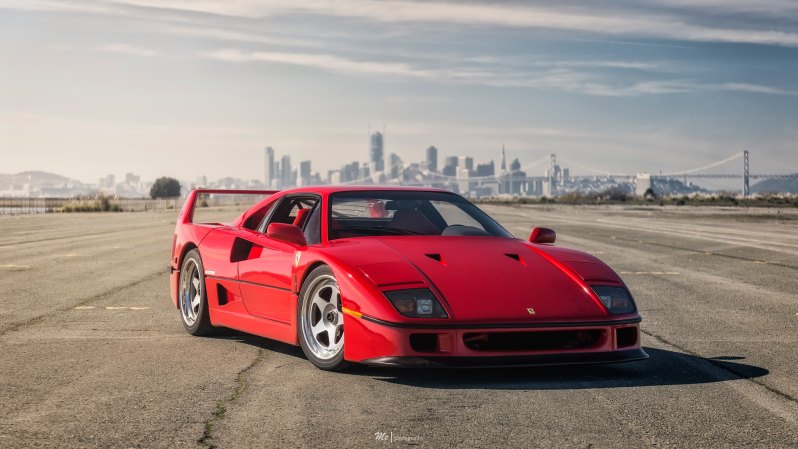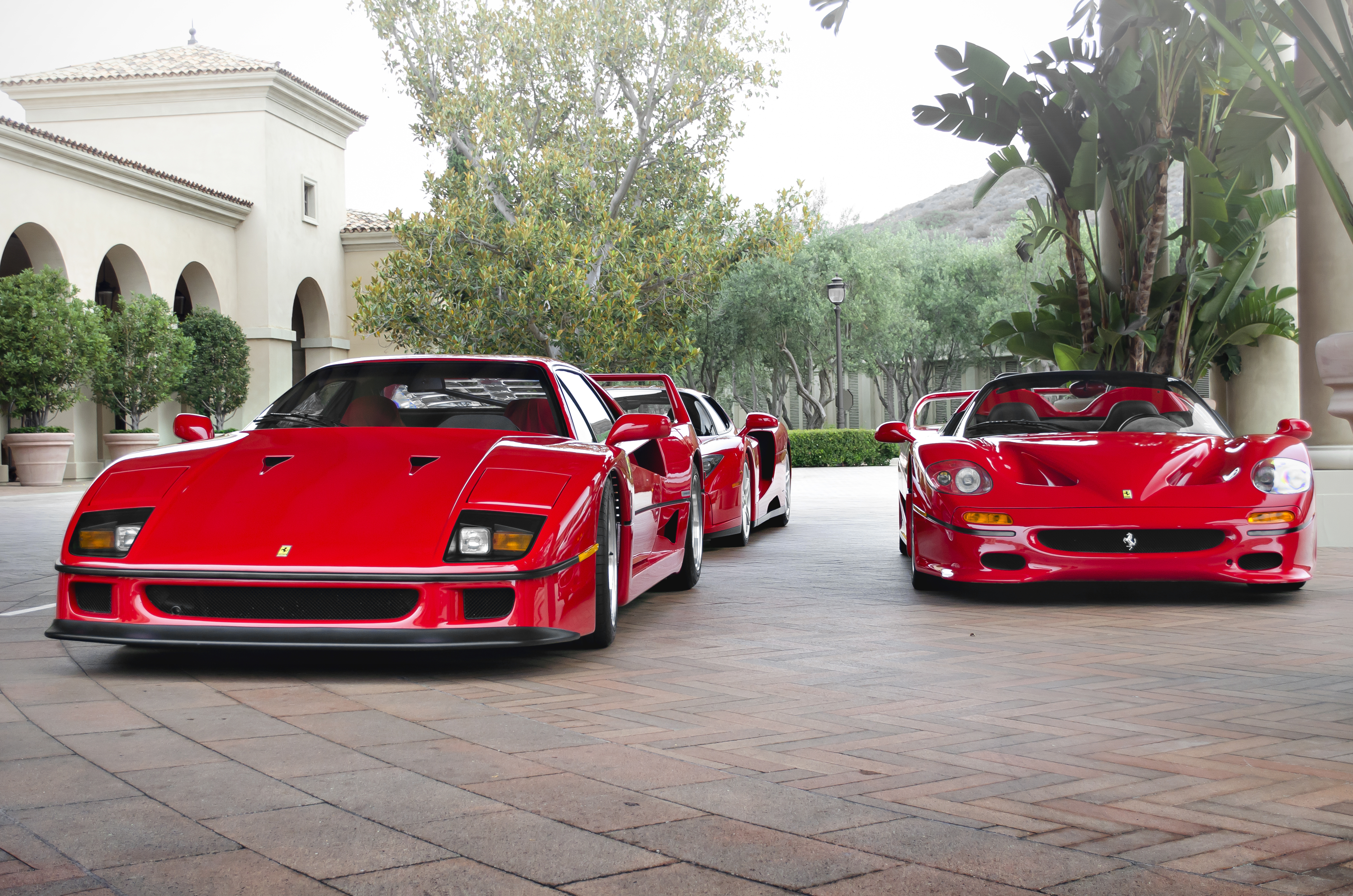
In the proverbial Automotive Hall of Fame, not all inductees are created equal. In the basement level of the hall, we might find a few polarizing niche cars like the BMW i8 or Chevy C5 Z06, among others. Above that would be a main floor where the majority of members would reside. Cars like the Acura NSX or BMW Z8 would fit nicely here; they are unquestionably special cars but not home runs for every enthusiast. Then there is the penthouse. This rarified air is reserved for the mold-breakers and standard-setters. Cars on this level are those that take center stage in the imaginations of children and breed a mix of lustful jealousy in adults when one happens to drive by. This is where you will find the Ferrari F40. Despite the catalog of F40 articles circulating the internet, there is always room for one more, especially if it contains nine things you might not already know about this fabled automotive creature. Read on to (hopefully) learn something new!
The F40 was an Italian version of the Shelby Cobra

Unlike so many posh, grand-touring Italian status machines, the F40 was built with one purpose in mind: performance. And though it was some twenty years later, the only other car that it truly had a kindred tangential relationship with that came before it was the Shelby Cobra (with an honorable mention to the original Dodge Viper, which came after). No ABS, no electronic controls, no power steering or power brakes. No electric windows, sound deadening, door trim, carpeting, or even internal door handles, just a simple pull cord. Much like the Cobra, everything non-essential was tossed aside in the name of weight savings to give the F40 the best possible power-to-weight ratio. The purity of its no-frills ethos may, in part, also be why the Shelby Cobra is another car that sits in the penthouse of the Automotive Hall of Fame, parked right next to the Ferrari F40.
F40 simply stands for ‘Ferrari 40th Anniversary’

Simplicity didn’t just apply to the mechanical aspects of the Ferrari F40. When it came time to name this pinnacle of performance, Ferrari decided on a simple alphanumeric code: F for Ferrari and 40 to commemorate the company’s 40th anniversary of automotive production. It was simple, elegant, and straight to the point—perfectly in line with the car’s spirit.
The Ferrari F40 was the first production car to reach 200 mph

Despite a myriad of cars that came shortly after it, which could hit the previously unthinkable 200 mph mark, the F40 was the first production car to do so. Yes, the Porsche 959 S, Jaguar XJ220, and McLaren F1 all came along just a few years after the Alpha Ferrari; much like Neil Armstrong, it’s much harder to remember who the second and third men on the moon were, and none of them can flaunt the same swagger as the guy that got there first.
The Ferrari F40 was a great investment

While its initial cost of about $399,150 may have been a staggering some (and still is) in 1987, if you had that kind of change lying around to throw down for an F40, it would have been an excellent investment. According to Classic.com, the average resale price for a Ferrari F40 (as of this writing) is $2.3 million, with the top sale hitting a whopping $4.0 million. Even compensating for inflation, that nearly 400 K in 1987 would equate to about $1.1 million in today’s dollars, meaning the F40 would just about have doubled your money. But in actual dollars, it has gone as high as ten times its original price. Who says cars aren’t a good investment?
The F40 was only the second limited-edition supercar by Ferrari

Despite the plethora of Prancing Horses we see roaming the streets these days, when the F40 debuted, it did so as only the second limited-edition supercar Ferrari had ever done to date. The first was the incredible 288 GTO, of which only 272 were produced from 1984 to 1987. The 288 was powered by a 2.8-liter twin-turbo V-8 that produced 395 horsepower and allowed Ferrari’s first halo car to run from 0-60 mph in 4.9 seconds. The 288 GTO set a high benchmark, which the F40 had to surpass, and did so handily.
The F40 was the last road car personally signed off by Enzo Ferrari

Unsurprisingly, the founder of the company that bore his name had a personal hand in each car that it sent off to production. The F40 debuted in 1987, and Enzo Ferrari passed away just a year later. One could argue that after seeing the mighty F40 dominate every other supercar on the planet at the time, Enzo’s purpose in life was complete, and he could pass on in peace, going out on top. Oddly, this final sendoff for the father of Ferrari may have been why the successor to the F40, the F50, was not as initially beloved and rates in our eyes as the most underrated Ferrari ever.
The Ferrari F40 was available in just one color

Yes, you’ve seen photos of yellow F40s here and there, but none of them are from the factory. Owners of original F40s could have their car in any color they chose, so long as what they chose was red. Of course, that didn’t stop some very wealthy, very rebellious millionaires from going out and having their Italian masterpieces customized to suit their own desires.
The F40’s exterior totaled just eleven pieces

The F40 was the first series production car to use mainly composites for its exterior body paneling. Thanks to the massive front and rear sections that could be removed to access all its essential mechanicals, the F40’s body panel count totaled just eleven pieces.
The Ferrari F40’s wheels were held in place with a single lug nut

Using seventeen-inch five-spoke Speedline split rim units shod in big Pirelli P Zero 245/40ZR-17 front and massive 335/35ZR-17 rear tires, which were created specifically for the F40, Ferrari used just a single lug nut attached to a Rudge hub. Since the F40 was created to be a track car that you could drive on the street, it seems fitting that they kept the wheel mounting true to its racing roots.


